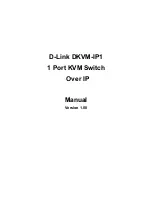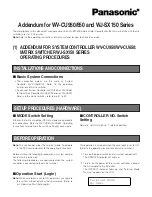
XRN Overview
21
XRN Overview
Brief Introduction
With the XRN (eXpandable Resilient Networking) feature, you can connect several
devices into a combined device and manage them as a single unit. The combined
device is called the Fabric, while the member devices are units. With XRN you can:
■
Manage multiple devices in centralized manner, with low management cost.
■
Extend the number of ports and switching capacity just by adding devices. You
can decide which equipment to purchase as needed, and better protect your
existing investment while upgrading the network.
■
Provide backup between multiple devices to improve reliability and to eliminate
single points of failure.
Major Technologies
XRN includes three technologies: distributed device management (DDM),
distributed link aggregation (DLA), and distributed resilient route (DRR).
■
DDM: Users can treat the Fabric as a single device. They can manage the Fabric
through any port or IP address connected into the Fabric, and from any unit in
the fabric.
■
DRR: The multiple units of a Fabric route and forward packets as a single unit,
and provide uniform VLAN interfaces, routing table and L3 forwarding table, so
the Fabric is regarded as a single Layer 3 switch. Failure of one of the units will
not affect routing protocol and data forwarding.
■
DLA: Users can aggregate multiple ports of several different units in a Fabric
into a group, for centralized management within the Fabric. Trans-unit link
aggregation can bring convenient aggregation setting and effectively reduce
single points of failure.
Typical Networking
Topology
Typical XRN networking topology is as shown in
Figure 1
. Switches of the same
type (that is, units) form a Fabric. As a core switch, the Fabric can be downlinked
to workgroup switches through several aggregation links, and uplinked to the
server group also through several aggregation links.
Summary of Contents for SuperStack 4
Page 6: ...18 ABOUT THIS GUIDE ...
Page 34: ...46 CHAPTER 1 GETTING STARTED ...
Page 62: ...74 CHAPTER 3 VLAN OPERATION ...
Page 69: ...PoE Configuration 81 ...
Page 70: ...82 CHAPTER 4 POWER OVER ETHERNET POE CONFIGURATION ...
Page 98: ...110 CHAPTER 5 NETWORK PROTOCOL OPERATION ...
Page 220: ...232 CHAPTER 8 ACL CONFIGURATION ...
Page 408: ...420 CHAPTER B RADIUS SERVER AND RADIUS CLIENT SETUP ...
Page 432: ...444 APPENDIX D 3COM XRN ...










































